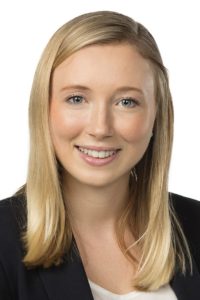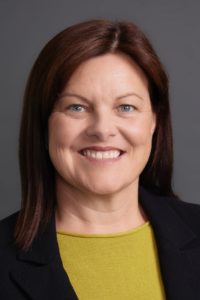Spreadsheets vs. Bedsheets
Public health insights from actuaries in Australia
June 2022The Australian health care system is characterized by free public hospital care, low- or no-cost access to primary care physicians and subsidized pharmaceuticals for all citizens. A recent U.S. study showed that Australia has one of the top-performing health care systems funded by tax revenue among Organization for Economic Co-operation and Development (OECD) countries in terms of access, equity and health care outcomes. In addition, more than half of Australians hold private health insurance to fund private hospital services and other services that are not publicly funded, such as dental care and physiotherapy.
However, recent challenges—such as the COVID-19 pandemic, increasing rates of mental illness and workforce shortages—have caused unprecedented strain on the health care system. Access to health professionals can be publicly or privately funded, so it may vary depending on an individual’s location and socioeconomic status. Consumer-level data also is fragmented—even within the public system—so it can be difficult to obtain a clear person-centered view of service access.
Actuaries increasingly are finding pivotal roles within the public health sector, driving important change and improvement. In recent years, I have been engaged to assist in many interesting public health projects. These projects have been career highlights, and I know I’m not the only actuary working in this space.
Departures From the Traditional Role
According to the Actuaries Institute Year in Review 2021, in Australia, 3% of Australian Actuaries Institute members work primarily in health insurance. But actuaries also can use their skills to derive insights to inform decision-making in public health care settings. To showcase some of this great work, I asked four other actuaries working in public health about their experiences:
- Jananie William, FIAA, who completed a Ph.D. about maternal health costs in Australia
- Maggie Lee, FIAA, who is currently completing Ph.D. research on mental health and excess mortality
- Anna Stephens, AIAA, who works in a government health analytics department
- Kirsten Armstrong, FIAA, actuarial consultant who worked for a nongovernmental organization (NGO) that works to improve health outcomes for people in low-income countries
I asked them what they find most interesting about their work in public health and how their career paths led them to these roles.

Actuarial Research to Inform Health Policy
When I first met Dr. William, I was fascinated to meet an actuary who had completed a Ph.D. After starting her career as a non-life actuary, she wanted to apply her actuarial skills to achieve better outcomes for women and children. “This led me to a Ph.D. in maternal health, and I have since built on this work by studying other areas of women’s health and economic well-being across their lifetime,” says Dr. William.
Dr. William’s postdoctoral research has included estimating the lifetime health costs of women who experience intimate partner violence using microsimulation and machine learning methods. “This gives policymakers evidence on the long-term nature of this social and public health issue and advice on how they can better support affected women at various points in their life,” she says.

Lee also has combined her actuarial and research skills to generate new insights about public health care by trading her actuarial consulting role for academia at Macquarie University. “In this role, I have had the opportunity to continue and expand my research interests in wider health and other social policy areas, including consulting with the Australian Department of Health, which then led me to working with them on mental health research as part of my Ph.D.,” she says.
Lee’s Ph.D. research involves analysis of linked government data sets to better understand mortality and life expectancy outcomes of individuals with comorbid mental and physical health conditions.
“Studies in Australia and globally have consistently shown that individuals with mental health conditions have an increased risk of premature mortality. The WHO has called for national targets to reduce the excess mortality among people living with mental illness,” says Lee. “I’m therefore very excited to extend current research by adding Australian-specific insights on the reasons for the premature mortality that may in turn allow for country comparisons and aid in the global action on mental health.”
Improving Government Service Delivery

Stephens works for a state government health department, NSW Health. She and her team use sophisticated analytics at a system level to tackle these issues. After the government designed new health models of care across the state, Stephens used her actuarial skills to evaluate and provide advice on the financial sustainability of these models.
Stephens believes actuaries can contribute to public health at a system level by providing important advice about equitable funding allocation across regions. “There is a role for an actuarial model that takes into account changing demographics, population health and models of care, now and projected into the future,” she says.
She also points out the value of actuarial modeling to help inform investment decisions at a program level to maximize outcomes for patients and citizens: “A major transition for our government is to pay for value, not volume, otherwise known as value-based health care. Investment into new value-based health care initiatives is an excellent application of the actuarial control cycle and requires strategic and analytical input through the design, implementation, monitoring in order to evaluate long-term financial benefits/costs and risks and inform investment decisions.”
How did Stephens find herself working as an actuary analyzing data in a government health department? In her previous role, she worked as a consultant to the health department, and when they decided to bring their analytics function in house, Stephens decided to apply for a role. She offers the following advice for other actuaries wanting to make a similar career move: “In order to apply your actuarial skills to best effect, invest time in building your domain knowledge, understanding the different care settings (primary, secondary and tertiary), and reviewing the source and manner of funding for these parties and how this might incentivize certain behaviors.”
Actuaries Use Their Skills to Support Low-income Countries

Health systems in low-income countries can leverage learnings from wealthier countries like Australia. Armstrong was the executive director of Research and Innovation at a large international development organization, The Fred Hollows Foundation, which delivers programs in 25 low-income countries, particularly in Asia and Africa.
One challenge many NGOs face is how to quantify and articulate the impact their programs have. Armstrong also describes a highlight where she helped this NGO change the way it measured its impact, which made it easier to describe the impact to donors. “We designed a universal measure—Years of Sight Restored—that we asked each project to estimate in advance and measure along the way. It meant we had an easier way to compare the costs and benefits of different projects and could make better decisions about where to have the greatest impact,” says Armstrong. “Few NGOS are able to do this.”
Armstrong has a long history of working internationally in low- and middle-income countries, and she understands some of the unique challenges they face as they introduce universal health coverage. “There are many tricks with these schemes, and governments can often inadvertently fuel health inflation through bad scheme design. I was able to draw on my experience in health system financing to advise several governments in Asia and Africa on how best to integrate eye care into their universal health insurance schemes, to make sure it remained affordable and sustainable,” she says.
Like Stephens, Armstrong had worked with The Fred Hollows Foundation as a consultant before applying for a direct role when the opportunity arose. “While a partner at PwC, I did some low bono work for The Fred Hollows Foundation and got to know them well. I was eager to find a way to move back to international work, and when an opportunity came up, it seemed an obvious thing to apply,” Armstrong says.
Using Disparate and Missing Data to Solve Specific Challenges
Drawing on my own consulting experience, my team has worked with a regional hospital to analyze local death data across a range of sources to assess the need for a palliative care ward. There previously was not enough need for a dedicated ward, but community pressure and population growth prompted revisiting this decision. As actuaries, we are trained to work with incomplete or missing data, so we used our skills to combine and analyze multiple data sets to build the business case for a new ward. Seeing the new palliative care ward officially open following input from our analysis was certainly a career highlight!
Breaking the Mold
I recently delivered my annual actuarial careers presentation to students at my old high school. Following the talk, a student told me she couldn’t choose between studying medicine or actuarial studies at her university and asked if it was possible to do both. The answer, based on our small sample of actuaries featured here, is yes, and why not?
While it might be considered an ambitious goal to train as both an actuary and a doctor, there are many opportunities for actuaries to use their skills in public health. Whether it’s working as a researcher, consultant or for government agencies or NGOs, actuaries can use their training and skills to provide valuable insights for decision-making across a range of health care settings. The skill sets of an actuary are essential to helping solve some of the most complex problems society faces today.
Statements of fact and opinions expressed herein are those of the individual authors and are not necessarily those of the Society of Actuaries or the respective authors’ employers.
Copyright © 2022 by the Society of Actuaries, Chicago, Illinois.

